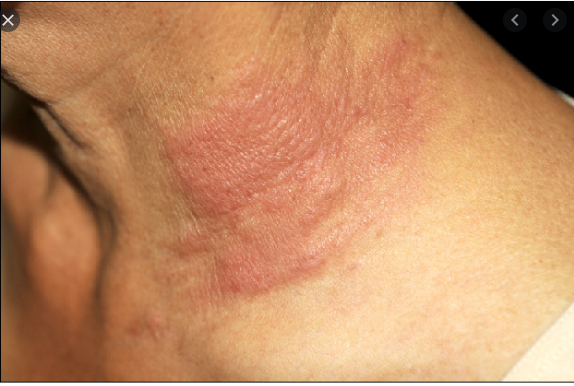CARCINOMA ERYSIPELATOIDES

What is carcinoma erysipelatoides?
Carcinoma erysipelatoides (CE) is an inflammatory metastatic carcinoma that is characterized by a red patch or plaque with a spreading border. This skin lesion is a sign of underlying breast cancer that has spread through the lymphatic system to the skin overlying the involved breast, resulting in inflammatory changes. This is a sign of cutaneous metastasis. The name “erysipelatoides” comes from the lesion’s resemblance to the bacterial infection erysipelas. CE most commonly occurs with breast cancer but can occur in other cancers such as pancreatic, tonsillar, colon, gastric, melanoma and rectal neoplasms, to name a few.
What causes CE?
As mentioned above, CE is a sign of underlying malignancy and is caused when tumor cells spread through the lymphatic or blood circulation and reaches the skin causing inflammation. Patients with either melanoma or breast cancer have the highest incidence of cutaneous metastasis.
How is CE treated?
Cutaneous metastasis is a bad prognostic sign and is associated with a poor prognosis in affected patients. If the patient has a small number of localized tumors surgical excision may be attempted.
References:
Wolff K, Johnson, RA. Fitzpatrick’s Color Atlas and Synopsis of Clinical Dermatology. Sixth Edition. 2009.


